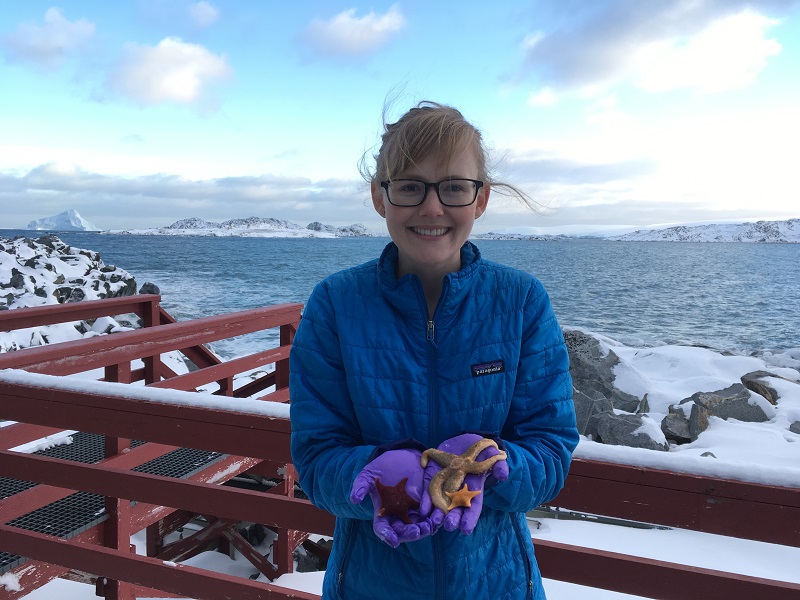
Sea stars are probably not the first animal you think of when you think about Antarctica. But, they are some of the most abundant animals in the shallow waters surrounding Palmer Station.
This past Wednesday, our group had a different-than-normal diving assignment. We were in search of sea stars! Well, that’s not quite true. We were more interested in the micro-organisms associated with the sea stars!
All multicellular organisms – from sea stars to humans – host a community of micro-organisms (bacteria, fungi, viruses, etc.). This collection of micro-organisms in a specific location (and their genes), collectively termed the “microbiome”, can be harmful, harmless, or beneficial to the host.
In humans, for example, the intestinal microbiome is usually beneficial, playing a role in breaking down and absorbing food as well as protection against disease. And, your intestinal microbiome is constantly changing in response to many variables. Sabrina and I may be roommates at Palmer Station, but simply inhabiting the same location does not mean that we have the same intestinal microbiome. Other factors, like genetics and diet choices (especially my cookie-centric diet; see below) play a role.

Just like us, sea stars have a microbiome associated with their stomachs (sea stars have two!) and other digestive organs. But, we don’t know very much about it. Which is why our group headed out to DeLaca Island, a bumpy 10-minute zodiac ride from station, for a dive where the divers had previously spotted a lot of sea stars.
Once underwater, the divers (Andrew, Chuck, and Maggie) went to work right away. Andrew took pictures of the location (and provided all the photos below) while Chuck and Maggie quickly found twenty-four sea stars inhabiting a relatively small area and belonging to four different species (pictured below). These sea stars may live near each other, but they have different genetics and, to some extent, different food preferences.

After collecting the sea stars, Chuck and Maggie also collected microbiome samples from the environment the sea stars inhabited. Chuck filled plastic Nalgene® bottles with seawater for sampling (left photo) while Maggie collected rocks from near the sea stars (right photo).

Back in the laboratory at Palmer Station, we took samples of the microbiome from the sea star stomachs, other digestive organs, seawater, and rocks. After processing these samples, we will know the diversity and types of bacteria inhabiting these cold, marine environments.
This knowledge has implications beyond sea stars. It’s estimated that Earth is home to 1 trillion microbial species and 99.999% of those are undiscovered!1 Discovering new microbial species and their functions helps us describe healthy sea stars and marine ecosystems, so that we can distinguish “healthy” from “unhealthy” in the future. Finally, this project provides insight – albeit on the scale of sea stars – into the role that location, genetics, and diet play in determining an organism’s intestinal microbiome.

1Locey KJ, Lennon JT (2016). “Scaling laws predict global microbial diversity” PNAS. www.pnas.org/content/early/2016/04/26/1521291113.full